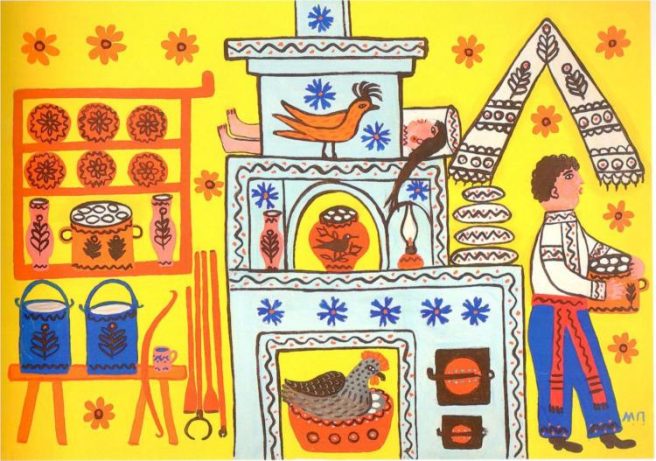
I first discovered Maria Prymachenko’s art while searching online for dumpling paintings about ten years ago.
Her “Dumplings on the Shelf” immediately caught my eye with its bright yellow background, orange crockery, and – what is that – a woman lying on top of the stove?!

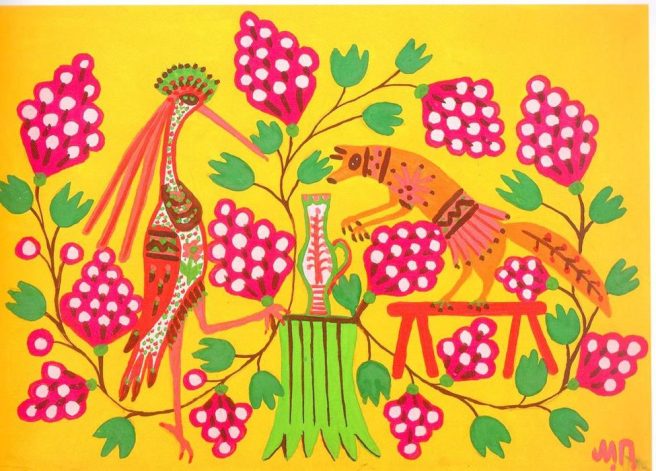
Not something you’d see every day. Of course I had to learn more about one of Ukraine’s most celebrated folk artists. I instantly fell in love with her vibrant colors, precise symmetrical patterns, pretty floral motifs, fantastical beasts, joyous scenes of country life, imaginative details, and of course, the intriguing stories in some of her pictures.
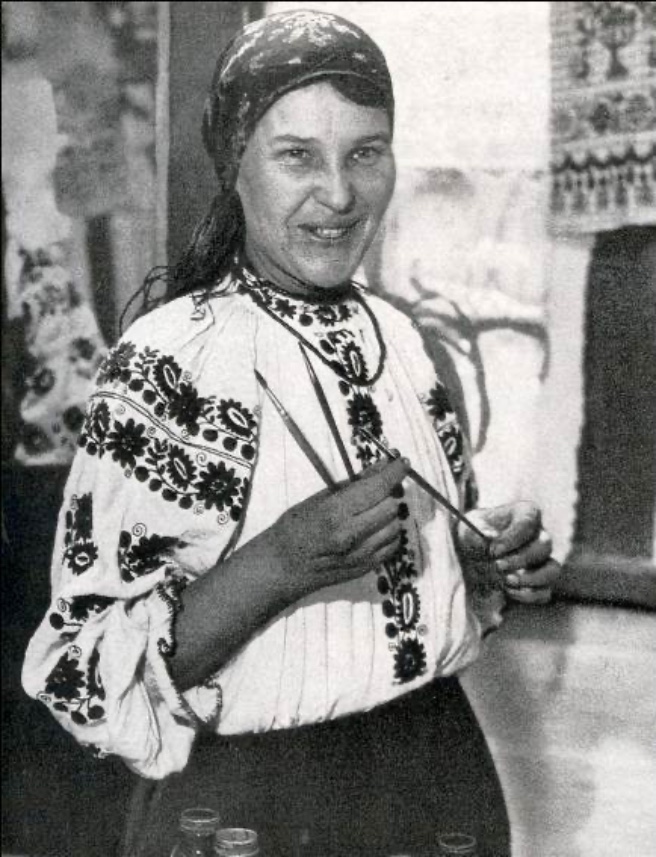
Prymachenko (1908-1997) was born to a peasant family in the village of Bolotnya (about 19 miles from Chernobyl), where she would spend most of her life. Her family taught her a variety of traditional Ukrainian crafts, including embroidery and pysanky (decorating Easter eggs). She also liked to draw and paint.
Once, as a young girl, I was tending a gaggle of geese. When I got with them to a sandy beach, on the bank of the river, after crossing a field dotted with wild flowers, I began to draw real and imaginary flowers with a stick on the sand… Later, I decided to paint the walls of my house using natural pigments. After that I’ve never stopped drawing and painting.



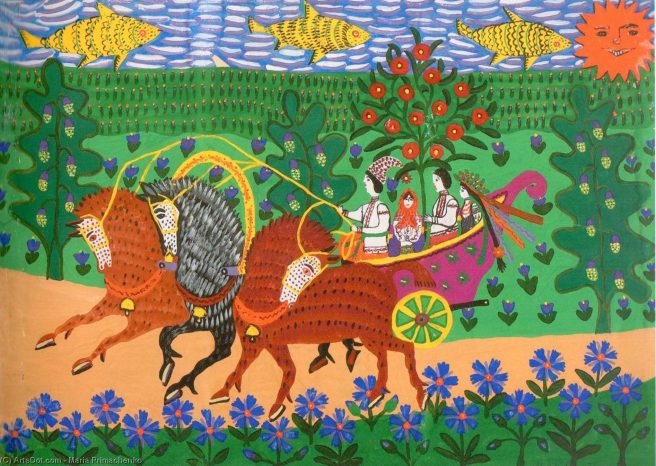

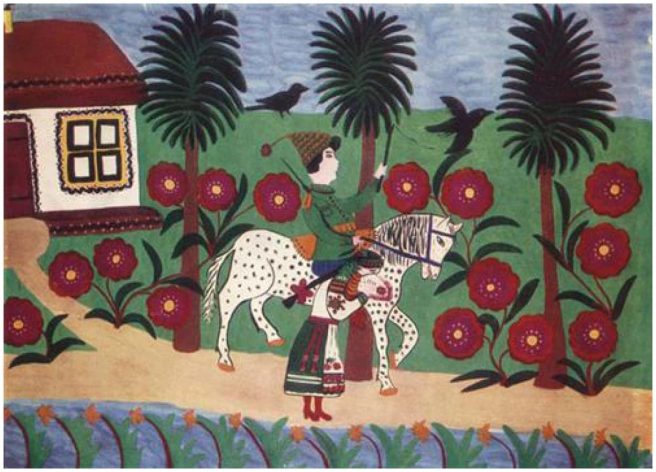
After several years of schooling, Maria contracted polio, which would profoundly affect her life and art. She became more thoughtful and introspective, with a pronounced compassion for nature and all living things.
Because of her talent for embroidery, in 1936 Maria was invited to join a community of artists at the Central Experimental Workshop at the Kyiv Museum of Ukrainian Art, with the intention of producing folk art at the professional level.

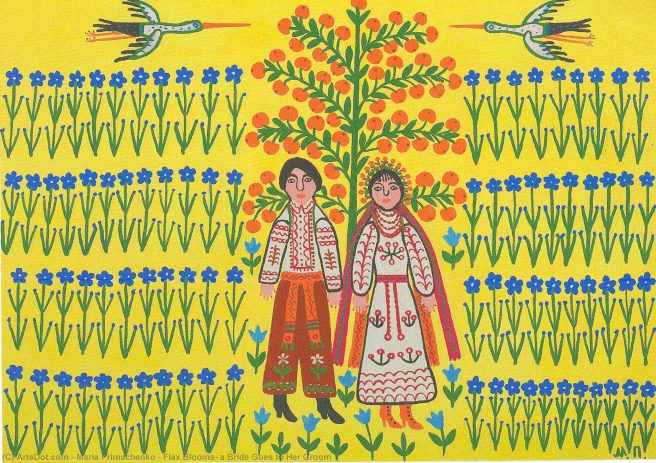
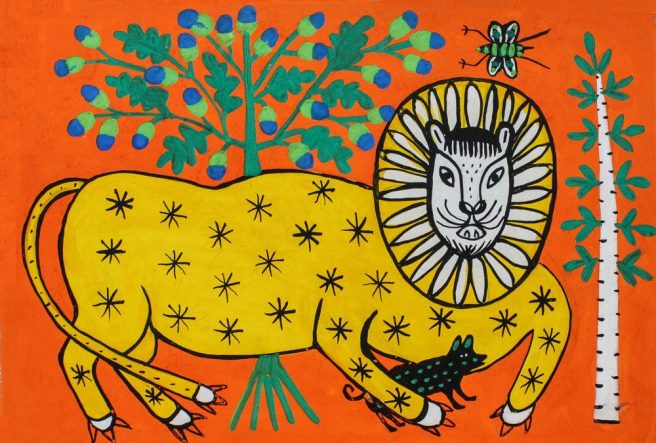
Prymachenko’s work was exhibited all over Europe, and in 1937 she won a gold medal at the Paris World Fair. Upon seeing her work, Picasso reportedly said, “I bow down before the artistic miracle of this brilliant Ukrainian.” Marc Chagall was also a big fan, describing the realistic and fantastical animals in his own paintings as “cousins to the strange beasts of Maria Prymachenko.”


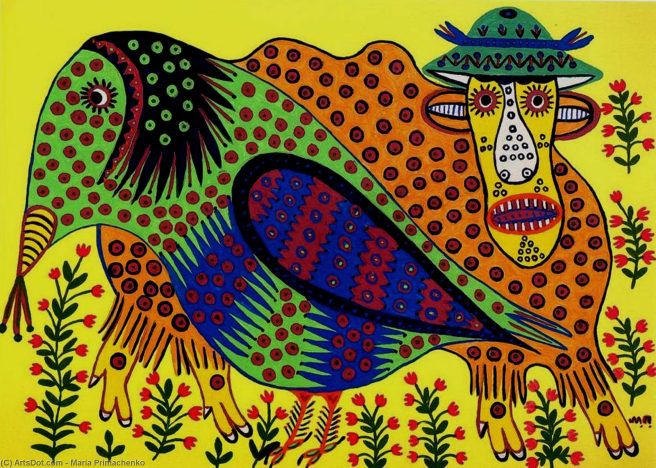
While in Kyiv, Maria underwent two operations which enabled her to stand upright unaided. She also met her partner, Vasyl Marynchuk, with whom she had a son. Unfortunately, they were unable to marry before Vasyl was sent to war (he died in the conflict).
Maria then returned to Ivankiv to work on a collective farm, with little time to devote to her art. Years later, she gradually resumed her creative endeavors with small embroideries before picking up her paint brush again in the early days of the Soviet Union.
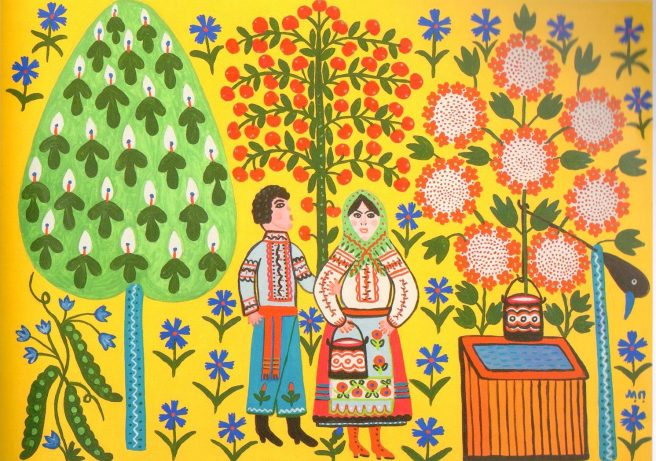
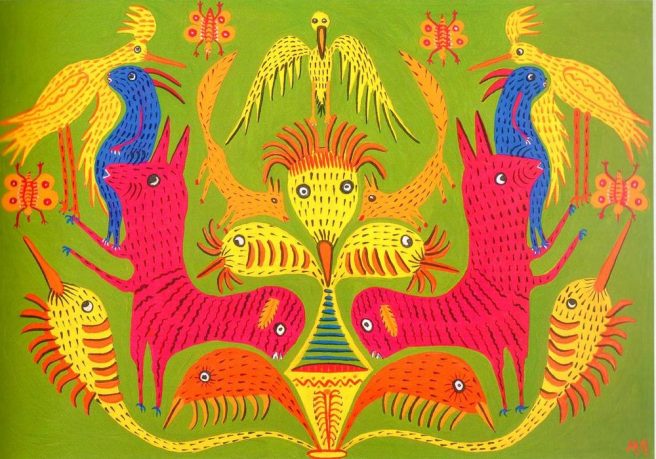
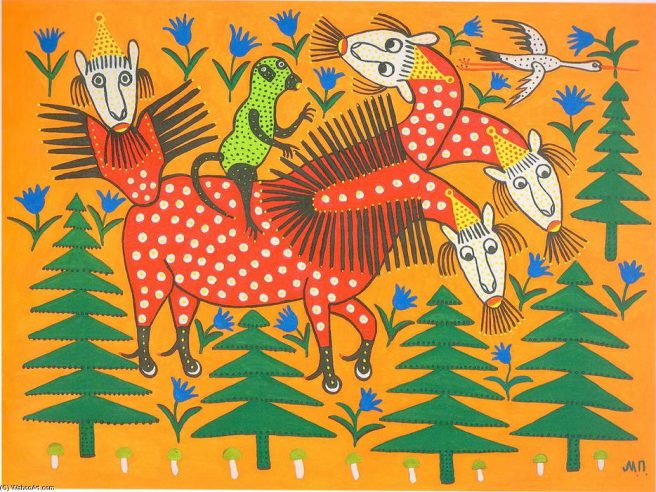

Her primary inspirations had always been traditional folklore, mythology, fairy tales and nature. She was especially partial to Polesian folk tales. Images often appeared to her in dreams. An important theme in her work was the struggle between good and evil. Usually the good always won, as embodied in the images of ‘kind’ beasts and birds (lions, bears, hares, storks, swallows).

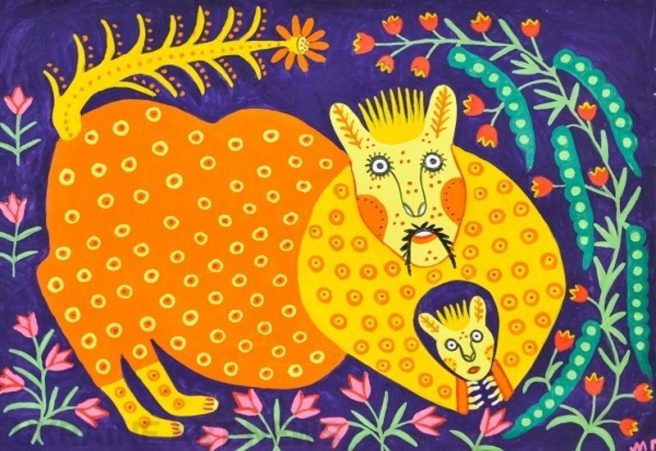
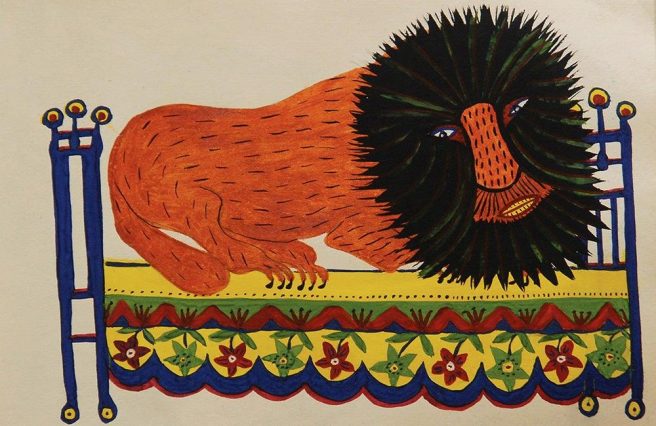

Prymachenko’s painting had been steadily evolving ever since she had transitioned from embroidery in the 1930s. Early on she painted on white backgrounds; by the 60s she had switched to bright colorful backgrounds, preferring gouache to watercolor for bolder, more arresting effects. She also experimented with adding proverbs or short phrases to the backs of her canvases.
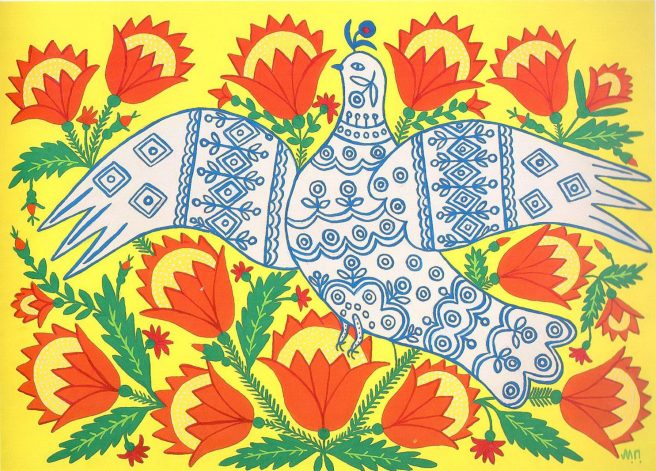
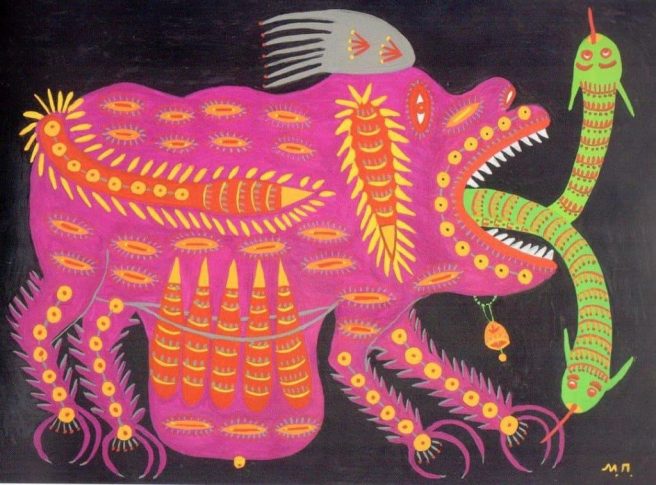
During the Cold War period of nuclear armament, Prymachenko’s work took on an overtly political tone, with pieces such as, “May That Nuclear War Be Cursed!” and “A Dove Has Spread Her Wings and Asks for Peace.” Yet she also produced pieces portraying hope and joy, as she was committed to preserving her cultural heritage despite the outside forces bent on destroying its independent identity.
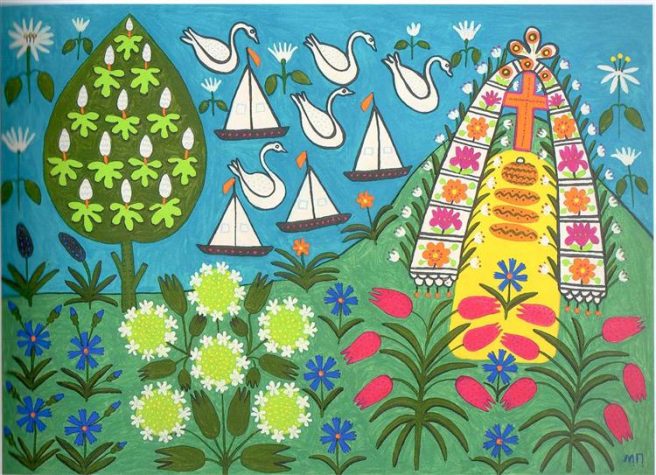

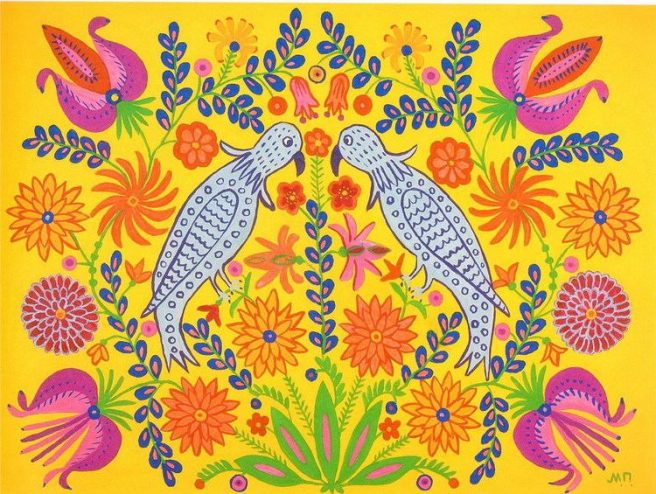
Prymachenko was in the news recently when the Ivankiv Historical and Local History Museum was burned down during the Russian invasion of Ukraine. The museum housed 25 of her paintings, ten of which were saved when a local man rescued them from the burning building. Still, the remaining paintings as well as work by other artists – irreplaceable cultural-historical treasures – were sadly destroyed.


The bulk of Prymachenko’s work – about 650 paintings – remains housed at the National Folk Decorative Art Museum in Kyiv.
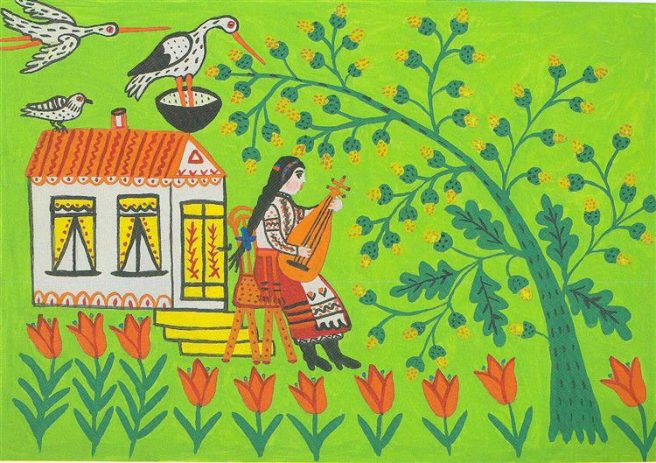

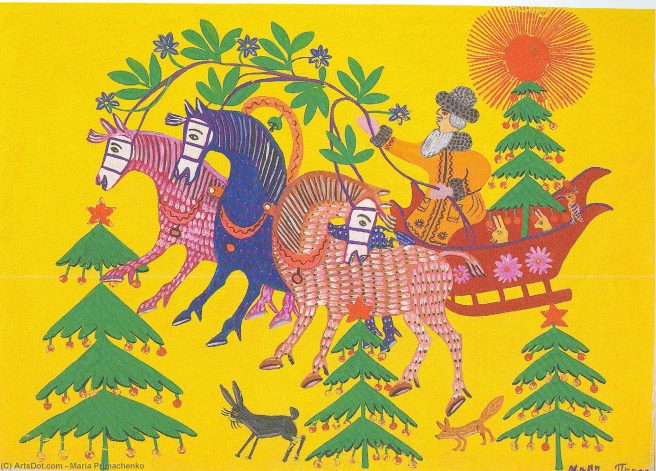

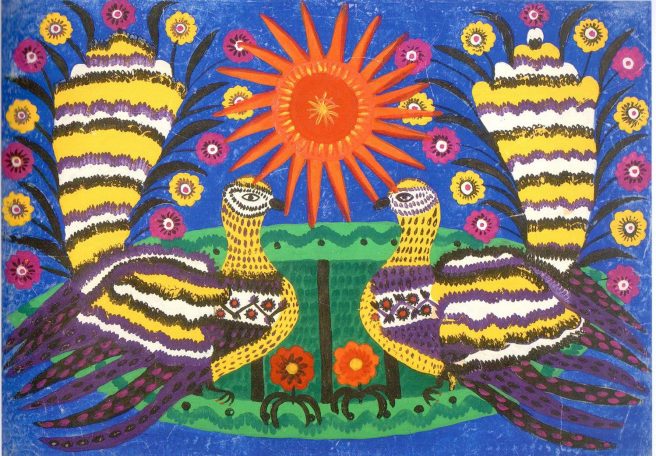
Maria is a national hero with a remarkable legacy. In 1966, she was awarded the Taras Shevchenko National Prize of Ukraine. UNESCO declared 2009 as the Year of Prymachenko, and her likeness has appeared on stamps and coins. She’s also had a boulevard and minor planet named in her honor. In 1970, she was officially dubbed the People’s Artist of Ukraine.
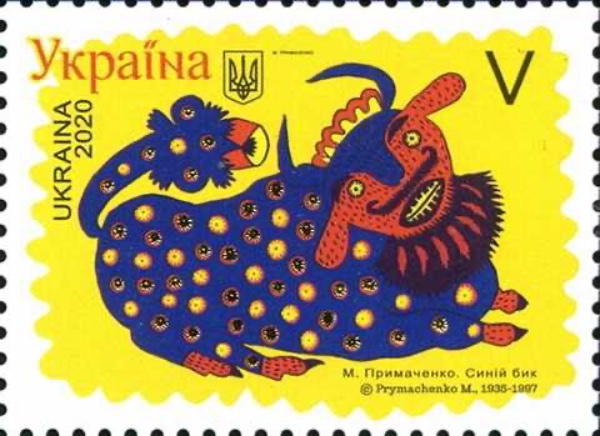

Prymachenko is hailed in the art world as a master of the naïve style, along with artists such as Henri Rousseau, Niko Pirosmanishvili, Ivan Generalic, and Nykyfor Drovniak. She possessed a unique world view, conjured from a deep love of Ukrainian tradition and her fanciful imagination. Her son Fedir, who died in 2008, also became an accomplished naïve painter. Her grandsons, Petro and Ivan, are also artists.
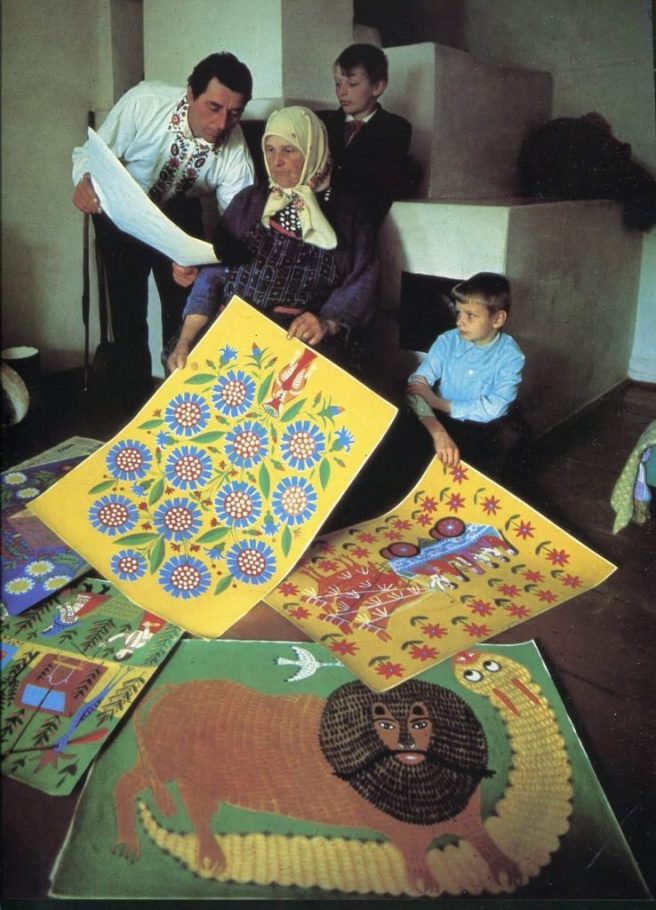
It’s especially poignant to revisit Prymachenko’s work in light of what is now happening in Ukraine. She loved beauty, was an ardent pacifist, and a champion of freedom and preserving cultural traditions. Her art gives us hope that good can ultimately triumph over evil.
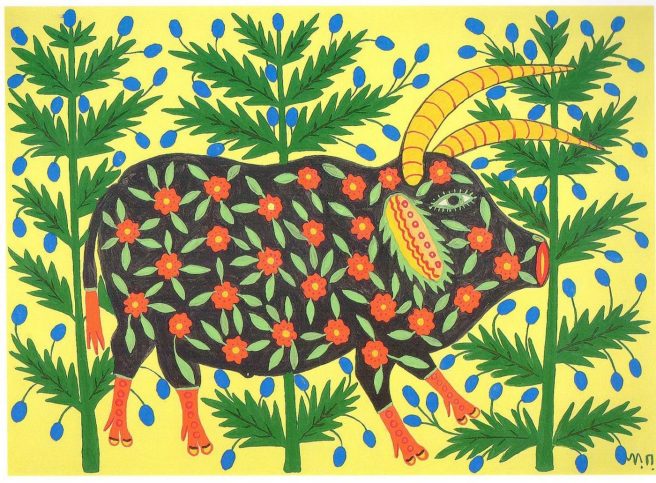
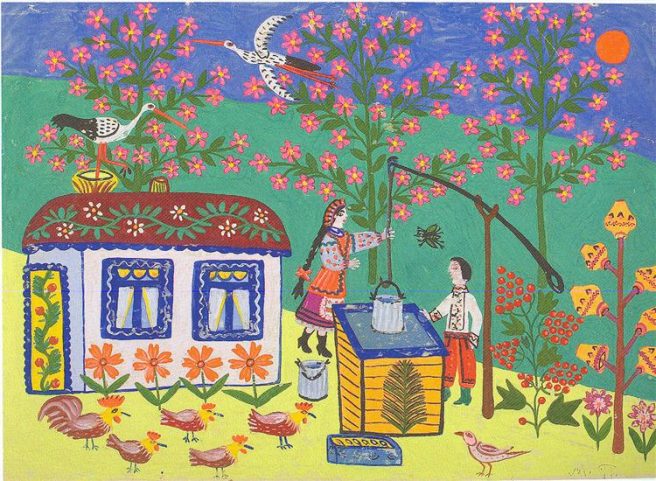




There is an interesting 3-part virtual museum tour featuring Prymachenko’s work. Here is Part 1:
Parts 2 and 3 can be found here and here.
*
*Copyright © 2022 Jama Rattigan of Jama’s Alphabet Soup. All rights reserved.

I love folk art! She sounds like a remarkable woman, and her paintings are wonderful. I hope the museum where the bulk of her work is will still be standing at the end of this horrible atrocity going on.
LikeLiked by 1 person
Thank you so much for the art history lesson!
LikeLiked by 1 person
Fantastic post Jama, thanks for introducing me to Maria Prymachenko’s beautiful, colorful art, and the 1st video was wonderful!
LikeLiked by 1 person
Thank you for this in depth exploration of her work and life.
LikeLiked by 1 person
What a wonderful post and tribute to Maria’s art and life, especially now while the Ukraine is under attack. Thank you for introducing me to her work, Jama.
LikeLiked by 1 person
Thanks for the art history lesson and the GORGEOUS colors and images!
LikeLiked by 1 person
I absolutely love her artwork and am grateful to you, Jama, for sharing it now. May the people of Ukraine find some strength and solace in the works of their great artists and strong people. xo
LikeLiked by 1 person
Thank you for this amazing, timely post, Jama – may her visions of good triumphing over evil come to pass now, and may her original works survive. XO
LikeLiked by 1 person
Thanks for shining light on this amazing artist, and on so many others, Jama! Your posts are always enlightening and uplifting.
LikeLiked by 1 person